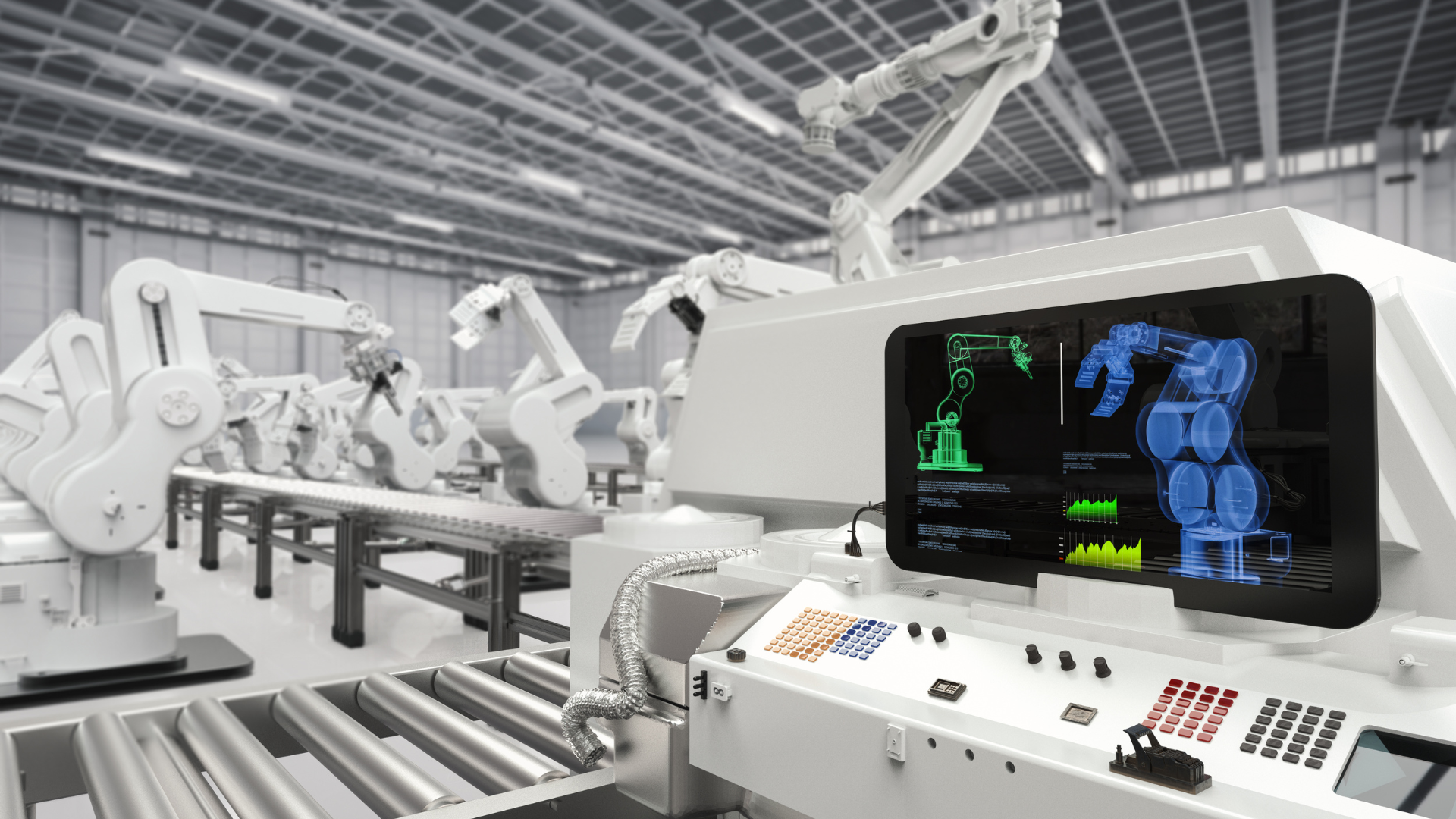Revolutionizing Lagging Industries: How AI Brings Transformation and Opportunity in Agriculture

In today’s rapidly evolving technological landscape, the potential of Artificial Intelligence (AI) to revolutionize industries is undeniable. While some sectors have embraced digital advancements, others have traditionally lagged behind. However, with the advent of AI, these lagging industries have a unique opportunity to leapfrog, bypassing intermediate stages of technological development and directly embracing AI-powered transformations. In this blog series, we explore how AI is reshaping various industries that have historically struggled to keep pace with technological advancements. From agriculture to manufacturing, healthcare to transportation, and education, AI is paving the way for unprecedented progress and unlocking new opportunities for growth and innovation.
In this blog, we embark on a captivating exploration of the remarkable potential of Artificial Intelligence (AI) in revolutionizing agriculture. By harnessing the power of AI, farmers can tap into a wealth of data-driven insights and cutting-edge innovations, transforming the way crops are cultivated, harvested, and nourished.
The Transformative Power of AI in Agriculture
Traditionally, the agricultural sector has been slower in adopting software technologies due to various reasons. One major factor is the perception that agriculture is a traditional industry with little need for advanced technologies. Farmers have relied on traditional knowledge and experience passed down through generations, often employing manual labor and basic machinery for their farming operations. The lack of awareness about the potential benefits of software technologies and limited access to information and resources further hindered their adoption in the agricultural sector.
Moreover, the high costs associated with implementing and maintaining software solutions acted as a deterrent for many farmers. Small-scale farmers, in particular, faced financial constraints and lacked the necessary infrastructure to support sophisticated software systems. The complexity of these technologies and the required technical skills also posed challenges for farmers, who often had limited technological literacy and access to training programs.
However, the landscape is changing, and there is now a compelling case for the agricultural sector to embrace AI technologies. The advent of AI has brought about a paradigm shift by offering transformative capabilities that can address critical challenges in agriculture. AI-powered solutions have the potential to revolutionize farming practices, optimize resource allocation, and improve productivity.
AI traction
One key reason why AI is now gaining traction in agriculture is the increasing availability and affordability of digital infrastructure. The widespread adoption of smartphones and internet connectivity has bridged the digital divide, providing farmers with access to information and tools at their fingertips. This digital transformation has opened up opportunities for software technologies, including AI, to be integrated into agricultural systems.
Furthermore, the rise of big data in agriculture has created a wealth of information that can be harnessed by AI algorithms. With the proliferation of sensors, drones, and satellite imagery, farmers now have access to detailed data on weather patterns, soil conditions, crop health, and market trends. AI can leverage this vast amount of data to generate valuable insights, enabling farmers to make data-driven decisions and optimize their farming practices for improved efficiency and productivity.
Additionally, the increasing global demand for food, coupled with the need for sustainable agricultural practices, has created a sense of urgency for the adoption of AI in agriculture. AI can help address pressing issues such as climate change, water scarcity, and food security by enabling precision farming techniques, optimizing resource usage, and reducing environmental impact.
Africa is leapfrogging
Africa, like many other regions, is facing significant challenges such as climate change, pandemics, and conflicts that threaten to push more people into extreme poverty. The need for a deliberate and strategic overhaul to revive growth and development has become apparent. One promising approach to achieve this is through the adoption of technologies from the Fourth Industrial Revolution (4IR), with a particular focus on artificial intelligence (AI).
The 4IR is reshaping various aspects of society, including government, education, healthcare, and commerce. With access to vast amounts of data and the convergence of cyber, physical, and biological technologies, AI has the potential to drive economic growth and development. According to a PwC report, AI could expand Africa’s economy by $1.5 trillion by 2030, capturing 10% of the global AI market.
Contrary to the misconception that infrastructure gaps hinder Africa’s progress in the 4IR, the continent boasts the fastest-growing and youngest population. These demographics can be leveraged as a demographic dividend rather than a liability. While Africa may have lagged behind in previous industrial revolutions, progress has been made in recent years. According to the 2022 State of AI in Africa report published by AI Media Group, many African companies have been investing in leveraging AI for business efficiency, with around 1600 companies specializing in AI, and technological hubs and start-ups emerging across the continent.
Key areas
In harnessing the potential of AI in agriculture, two key areas must be addressed: the need for a skills revolution and ethical considerations. Developing communication, logical, numerical, and computational skills is crucial, along with upskilling the existing workforce to meet the demand for AI-related jobs. Ethical policies should ensure transparency, accountability, and safety while fostering inclusive AI development.
Regional collaboration and increased investment are also vital. Harmonization, inclusivity, and sharing best practices guide policy-making, while investing in AI centers and research facilities drives AI-driven economies. Infrastructure development, integrating 4IR-specific infrastructure with existing systems, further supports AI adoption.
Africa, with its mobile technology capabilities and demographics, has a prime opportunity to embrace AI in agriculture. By proactively addressing these aspects and seizing opportunities, Africa can drive innovation, economic growth, and societal development while ensuring responsible and inclusive AI implementation for a sustainable future.
 Understanding the Risks and Challenges of AI in Agriculture
Understanding the Risks and Challenges of AI in Agriculture
I hesitated to have this section in the blog, but I believe that we should always consider the risks a disruptive transformation brings to an industry.
One crucial concern revolves around the potential exacerbation of inequalities within the food system. The adoption of AI-driven technologies (and in general any technology) has the capacity to consolidate power in the hands of a few dominant corporations, potentially marginalizing small-scale farmers and deepening existing disparities. Additionally, transparency and accountability in AI algorithms and decision-making processes are vital to address the complex and often opaque nature of these systems, allowing for greater understanding of the factors influencing agricultural outcomes.
Moreover, it is essential to recognize and address the social and environmental implications of integrating AI in agriculture. While AI holds promise in enhancing productivity and efficiency, there is a risk of relying too heavily on technological solutions without considering the necessity of sustainable and regenerative farming practices. The potential environmental impacts, such as increased dependence on chemical inputs or disruptions to ecosystems, necessitate careful assessment and the implementation of appropriate mitigation strategies.
To ensure the responsible integration of AI in agriculture, a comprehensive understanding of the risks and challenges is imperative. As discussed in our previous blog, robust regulatory frameworks, ethical guidelines, and ongoing research are necessary to maximize the benefits of AI while minimizing any potential negative consequences. By proactively addressing these concerns, we can strive towards a future where AI technologies in agriculture contribute to sustainable and equitable food systems.
Conclusion
AI-powered technologies offer farmers insights and cutting-edge innovations that can revolutionize farming practices, optimize resource allocation, and improve productivity. The adoption of AI in agriculture has been traditionally slow due to various factors such as cost, limited access to information, and technical skills. However, the landscape is changing, and there is now a compelling case for the agricultural sector to embrace AI, without going through traditional software as a service development.
How can NuBinary help?
NuBinary can help your company with AI strategy and through the entire software development lifecycle. Our CTOs are capable of figuring out the best technology strategy for your company. We’ve done it several times in the past, on a big range of different startups, and have all the necessary knowledge and tools to keep your development needs on track, either through outsourcing or hiring internal teams.
Contact us at info@nubinary.com for more information or book a meeting to meet with our CTOs here.



